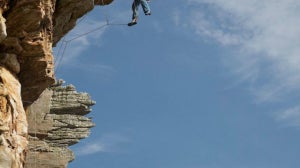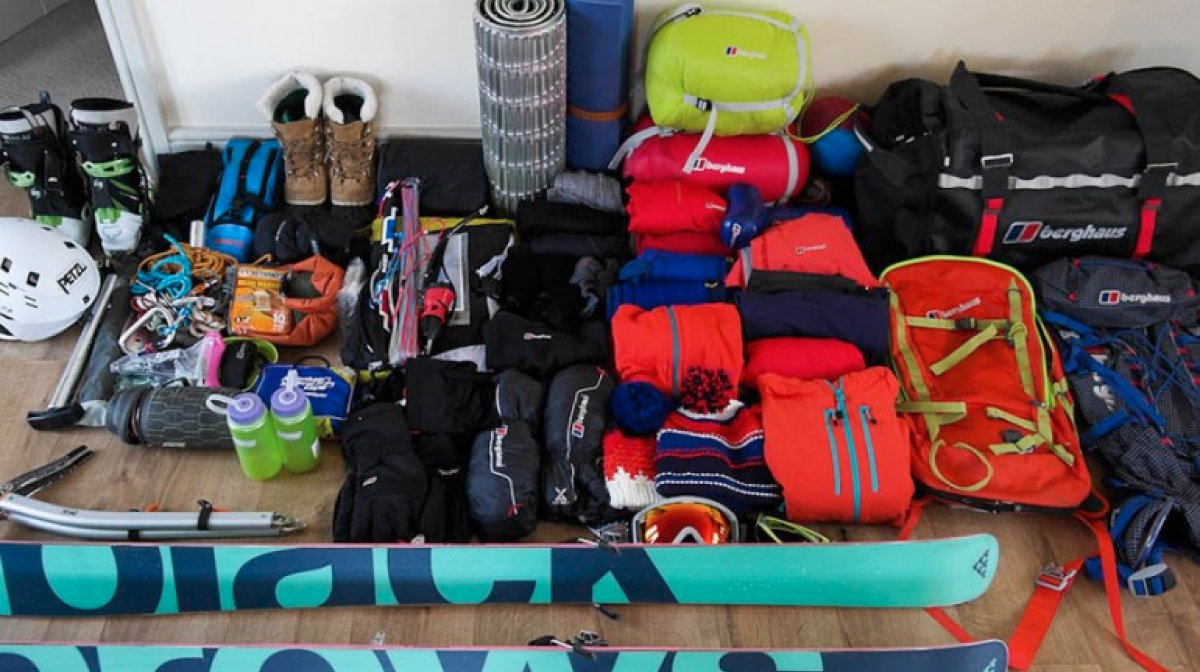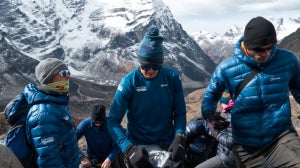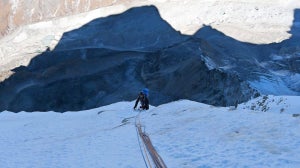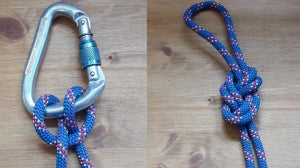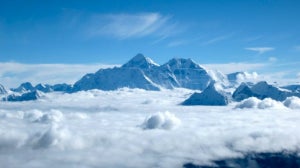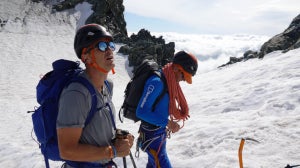
Extreme Cold Weather Clothing: Arctic Camping
With the possibility of the harshest weather conditions in any season across the Arctic, an adventure visit there will demand the right equipment, not just to keep you warm but is essential for your survival. This guide is not exhaustive by any means but meant to only serve as a basic guide for a camping/ ski mountaineering trip to the Arctic (specifically with Baffin Island in mind and camping on ice).
The gear required will always be relative to the conditions and adventure planned and is worth doing extensive research to get it right for your needs. The right kit will make the adventure experience all the more enjoyable in extreme cold weather clothing.
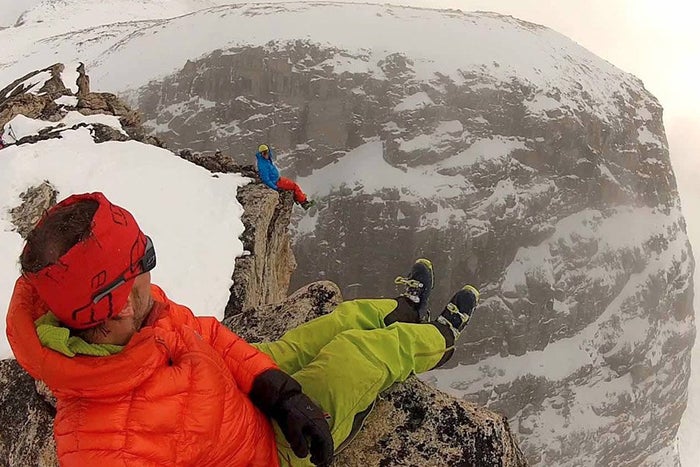
Clothes:
Plenty of warm layers are key. Hydrodown works really well in the Arctic, even in areas where the humidity is quite high (e.g. camping on sea ice). It’s worth looking for good quality and technical products that can withstand a high level of moisture to ensure it stays dry in the most humid/wet conditions. Keeping warm is the highest priority and wet kit will not only make your experience miserable, it will be hard to dry out in cold conditions.
A good layering system will work well. Allowing you to strip down on warmer days and layer up on super cold days. I like synthetic materials for climbing and hard exercise and warm down for down times and hanging around camp:
1- Base-layer
Thermal underwear that is made from merino wool or polyester blends is best. If one base layer isn’t enough, add a second base layer, or increase the insulation value with a micro fleece top. The important part is to make sure your base layers have fast wicking properties.
2- Mid/ Insulating layer
This is where your “warmth” is generated. A real insulating layer doesn’t necessarily need to be waterproof but wind proofing is a real benefit in the Arctic. By keeping the final layer as your wind/waterproof element, you’ll have the flexibility to adapt to a greater range of weather conditions in the Arctic. Just insure this layer is warm, breathes extremely well and dries quickly.
Berghaus Mt Asgard Hybrid Jacket is an incredible layer that stayed dry during hard work and humid conditions. This versatile piece worked well as a mid layer or an outer layer when working hard on the climb. For pants, equip yourself with a good fleece pant to go over the base layer for extra warmth on really cold days. These are also great to sleep in
3- Waterproof/Windproof layer
Shell jacket and pants are always good to keep the elements out. Shell is not everyone’s preference with some great soft shell jackets (more breathable fabrics) that will keep you warm and be breathable at the same time. Plan your gear around the function of your specific adventure (length, temperature range) and your budget. Remember to have a jacket big enough that will allow for layers underneath. Make sure your pants are also not too tight – remember that you want to put at least two layers underneath. Hoods on jackets are essential to be able to shut out the cold Arctic wind and provide added protection and warmth on cold days
4- Outer Down layer for extra warmth
This layer is essential for camp or those really cold days. Consider taking good down or outer insulating pant for camp or standing around in. Again, take a big enough size to put over a number of layers. An outer insulating pant with full zips will make getting in and out over layers, easy. I also like down booties for camp and sleeping in. A pair of boots/slippers, with a protective tread underneath, are great for wondering around base camp.
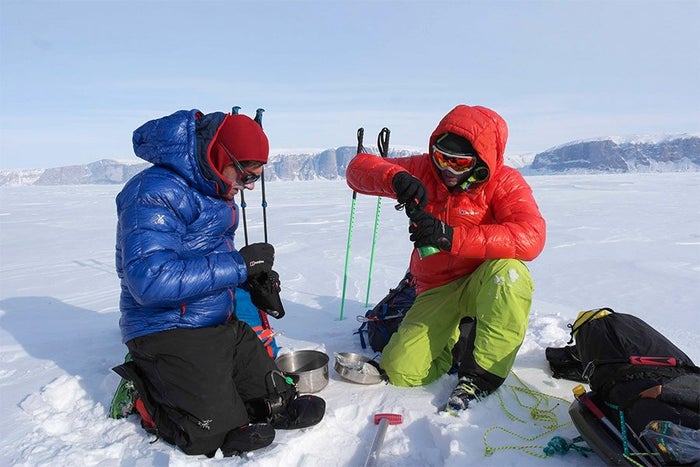
Gloves
Choosing the right glove for your adventure One is one of the most important items to get right. I do think choosing the right glove for you is quite personal and often dependent on how cold your hands get. With this said a good quality glove that does its job well is key. In the Arctic I like a layering system that you can add layers as well as protection and heat as your needs for warmth require.
Polartec base layer glove are great for warm days and act as a great layer inside a shell for colder days. I like shell gloves that are breathable when ski touring but a warmer insulated windproof/waterproof option is always a good addition. Down filled mitts aren’t that great during activity as they can get wet from sweat, but great for keeping hands warm in camp and on really cold days/skiing. Take a hand heater system for those colder days where you just need to your hands warm quickly.
Take outer layer glove large enough to fit layers under.
Hat, neck tubes and face guard
Face guards with breathable holes are essential to keep the arctic winds out and prevent frost bite on cold days. A neoprene face mask and goggles are great for wind protection.

Neck tubes are great – they keep your face, ears and neck warm and also limit the amount of heat coming out the top of your jacket..
I like to take a thin hat liner that fits under my normal woolly hat. Mine is a merino blend and lovely and warm but there are lots of options on the market. A liner is like a base layer for head and can stop that ice-cream frozen head feeling on really cold days. It is also good for sleeping to stop the heat escaping at night if it gets cold. For ski mountaineering trips this warm base layer also fits under the helmet for extra warmth.
Socks
This is hugely important – a good pair of socks will keep your feet warm even when wet. Forget cotton and focus on merino wool or merino silk mix socks.
Footwear
The right footwear in the Artic is essential. Depending on the type of adventure you are doing the right footwear can determine how long your trip will last as frost bite in the toes will cut the trip short. Cold feet in the Arctic are also miserable and hard to manage, standing on seas ice is like a massive heat sink constantly stripping the heat out of your feet. It is worth researching to make sure you get the right footwear for your specific trip. Look for insulated liners that can be taken out and dried in your sleeping bag. The type and quality of the rubber of the boot is also worth researching. I found out the hard way that some rubbers on boots are better than others at keeping the feet warm.
For ski mountaineering trips take a larger ski boot to allow for warmer socks and for heat to circulate through the toes. We found a neoprene boot cover was essential. These covers help stop the cold Arctic wind from freezing sweaty socks and keep in the warmth. Unfortunately, there is no one great design on the market at the moment but in my experience they are worth taking anyway just to keep the wind off the boots. I even wore mine over my camp boots.
Remember: this is just a guide – I like to over prepare for my cold adventures – it’s much easier to shed a layer if you’re too warm, than suffer being cold or wet.
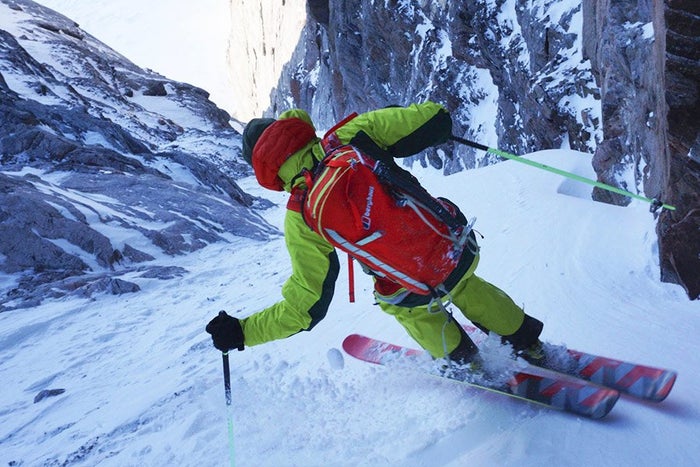
Ski Mountaineering kit/Travelling
Sleds are good for hauling your gear around. The little plastic kiddie sleds are cheap and work well enough for short travel on hard sea ice. If you are travelling large distances or in areas with deeper snow then consider sleds with runners. For travelling with kites, it’s a good idea to have two sleds clam-shelled over your kit so that when/if the sled flips, it will keep going. For short distances these sledges work well as they can be easily tied together and hauled in a train. Take loads of cord for tow lines and for tying tents down to v-threads. Cord is essential for the securing your kit to the sledge.
For the flat climbing skins are great for traction and kicker skins save weight and pack better. For steep climbs and long hauls on sheet ice consider taking Crampons. This is no place for aluminium kiddies’ toys and steel 12-point crampons are reliable.
Depending on your adventure and the type of terrain you are travelling/climbing over, take normal ski mountaineering/touring kit that you would for any adventure in the Alps; Including avalanche and Glacier travel kit.
Camp
A good tent that can withstand storm force wind is essential. More than anything, being able to pitch it securely to withstand strong wind is key. Preferably pitch your tent out of windy areas or learn to build snow block walls for extra protection. Take a snow saw for this. Take some old ice screws to hold the tent down if you are camping on sea ice. If you are travelling a single skin is more practical. If you are staying in one area to explore then go for something larger and more practical. A cook tent is also a good idea, whilst a luxury, it is something I longed for on my trip to Baffin. Cooking outside in the cold Arctic winds can be brutal and miserable.
Consider a good quality sleeping bag. Like the down jackets look for a good technical bag that can withstand getting wet. Look at the down-fill number and make sure you take the right one for the conditions and temperatures you are going to experience. It can be humid in places in the Arctic and a wet sleeping bag will make sleeping horrible.
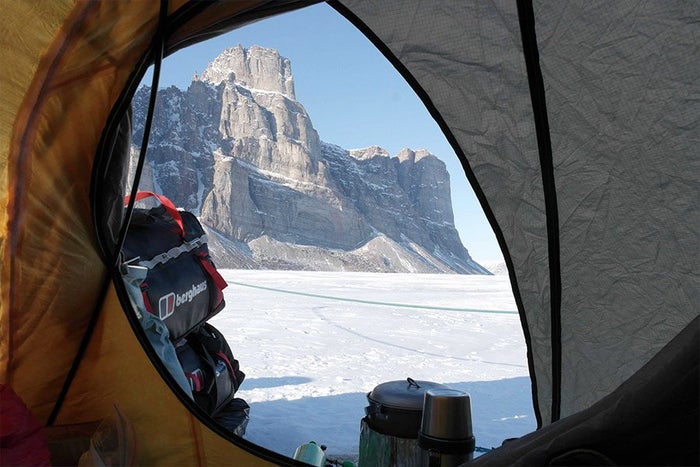
Recommended: Berghaus Ulvetanna 1200 sleeping bag.
The down worked well in the cold damp conditions, I only put mine in the sun twice over 30 days to dry. I slept with all my boot liners in my sleeping bag and this bag still didn’t get wet or feel damp. When sleeping on the ice with humid conditions we expected to really struggle to keep our sleeping bag dry but the Ultvetanna really stood above other sleeping bags for its performance in challenging conditions.
Two sleeping pads are essential, especially if you are camping on the ice – one foam matt and one down insulated inflatable one is the best recommendation.
An MSR XGK – EX is probably the best option for a stove. With years of experience and testing this stove is built for the most extreme conditions. The MSR Wisperlight is also good. The most important thing is that the stove has a fuel preheat loop so you don’t have cold fluid going onto the nozzle that extinguishes the flame (believe me, not having this pre heat loop can create a whole world of pain in cold conditions). For fuel we used 0.15 litres person per day. A thin plywood board with tin foil with a wind protector makes a nice stove platform/cooking area.
We used an Iridium satellite phone, which had good reception most of the time. If the sky is blocked by big rock walls, you will lose the connection, then get it back when the next satellite comes by, which may be a couple of minutes.
Word of advise – make sure any liquid bottles for water etc have a thermal cover. Even this will not stop things freezing so keep all water bottles in sleeping bags and in jackets when hanging out in camp. All deodorant and toiletries freeze so question whether you really need them before you go. If the whole team are smelly then it is OK to stay dirty.
Kites
Depending on where you go and your objectives, the Arctic can be a kite-skiers dream. The ability to cover large distances with huge loads of kit effortlessly, make kiting in the Polar Regions is a no brainer. This advice comes with a word of warning; Kiting can be super dangerous and I can’t advice more strongly that you get lessons and learn about the wind. I watched my team mate get lofted off the ground by some distance only held down by his 100kg load tied behind. British Insurance companies are also worried of kiting adventures so shop around for insurance to make sure you are covered if you are using kites.
Foil kites are probably the best kites for an Arctic adventure. These are soft kites with no bladders and are fairly indestructible. Repairing a kite bladder in freezing conditions will just not work – the glue of the patch just won’t stick for starters. I personally like the Ozone Access kite and bar system. It is a super stable kite in most conditions with a safety system that works really well. If you are more experienced and like jumping, the Ozone frenzy can be fun but I personally would look for a land kite that helps keep you on the ground as much as possible.
If you take two kites to cover a wider wind range consider the same brand so you only have to take one bar system. A 6m and a 10m/12m should cover most kiteable days. I took one 8m and this was good enough for most days I was comfortable kiting in. If you are an experienced kiter you can go as low as a 4m which you can work in lighter wind but will cover you in super strong wind.
Food
Unless you are going to more populated towns in the Arctic as your start point, I would suggest bringing all of your food from home. On Baffin Island we bought Cheese and butter in the local store before we went into the Fiords. There are a number of good companies doing freeze dried meals that are pretty tasty food. Combine packet meals with noodles and rice to bulk up calories. We took lots High 5 drinks, energy bars to keep our calorie intake high. A variety of snack foods like nuts, sweets and dried fruit are also good treats in the cold weather. The key thing to consider is weight to calorie ratio. You need as many calories as possible for minimum weight. But don’t be too cruel, tasty food makes a trip much more interesting when you have a nice meal to look forward to.
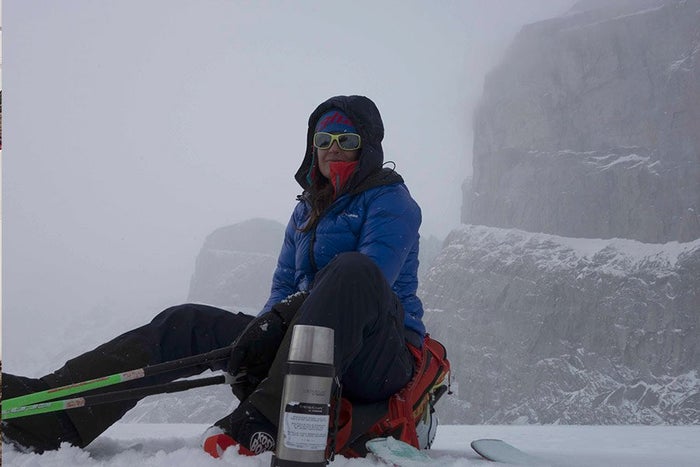
Skiing Couloirs in NE Baffin Island
Finding couloirs is pretty easy as there are a lot of them. You can simple look across the Fiord, then kite over to them, establish a camp, then spend a few days skiing them as day trips. Then spy some more couloirs down Fiord, move camp and repeat. Sometimes the couloirs are not very obvious from below or close up – you need to see them from a distance to see if they connect. But even the short ones can be fun to ski and make for quicker objectives.
The best lines however are the ones that go all the way through, as they tend not to have melting snow above them. If they get really steep and have a melting cornice at the top, it will most likely be icy and unskiable.
Maps are available on line http://atlas.nrcan.gc.ca/site/english/ Look for “Clyde River”
Living on sea ice is very corrosive to all non stainless steel metal. Once it get a bit warmer, stoves, shotguns, ski equipment and other bits & pieces get rusty in a matter of a few weeks. Check your equipment on return to make sure your ski bindings are still safe.

Related Articles
